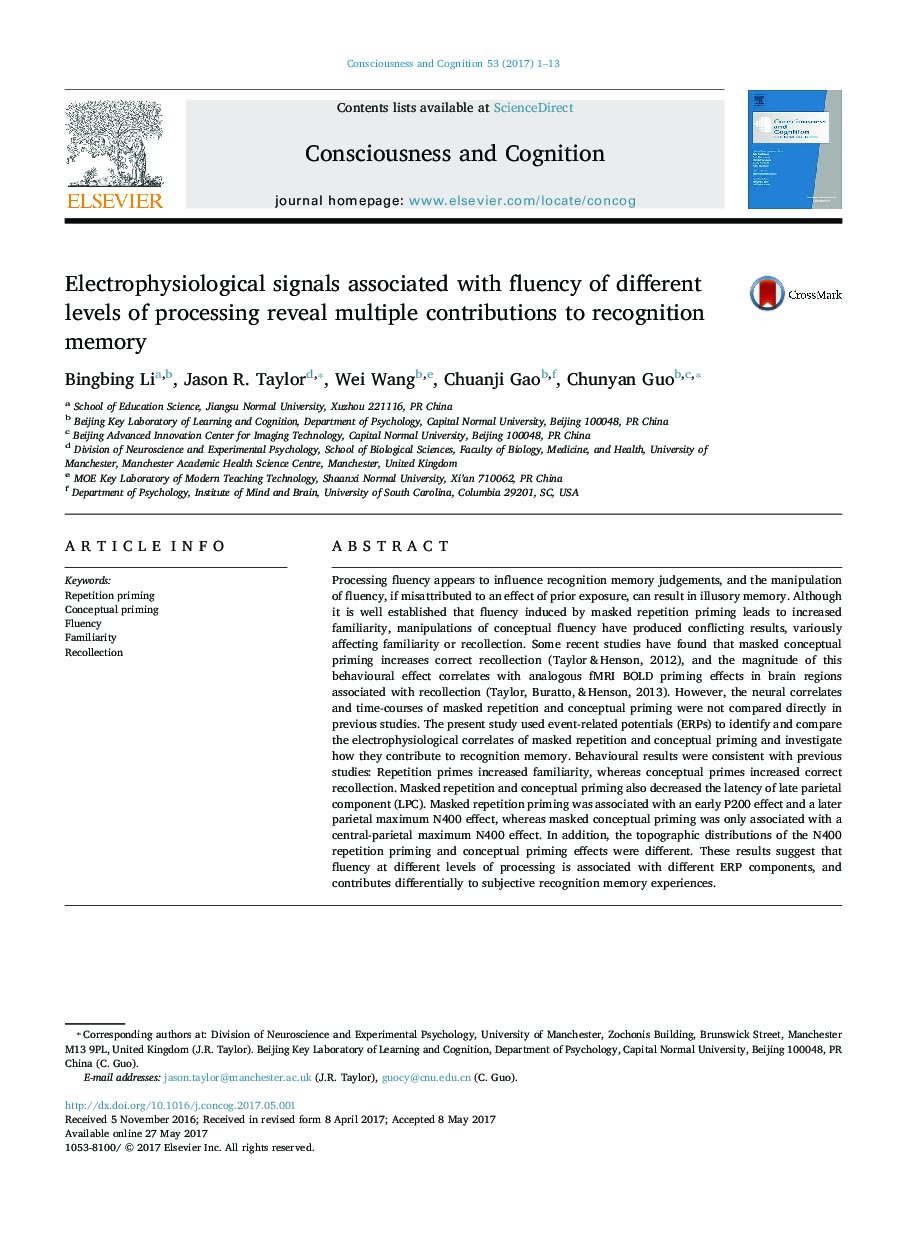| کد مقاله | کد نشریه | سال انتشار | مقاله انگلیسی | نسخه تمام متن |
|---|---|---|---|---|
| 5041776 | 1474158 | 2017 | 13 صفحه PDF | دانلود رایگان |
- We found repetition priming affects familiarity whereas conceptual priming affects recollection.
- Repetition and conceptual priming are associated with spatially and temporally different ERPs.
- We found that topographic distributions of N400 effects are different from FN400 effect.
- Both masked repetition and conceptual priming decrease the latency of LPC.
- We found fluency at different levels contributes differentially to recognition memory.
Processing fluency appears to influence recognition memory judgements, and the manipulation of fluency, if misattributed to an effect of prior exposure, can result in illusory memory. Although it is well established that fluency induced by masked repetition priming leads to increased familiarity, manipulations of conceptual fluency have produced conflicting results, variously affecting familiarity or recollection. Some recent studies have found that masked conceptual priming increases correct recollection (Taylor & Henson, 2012), and the magnitude of this behavioural effect correlates with analogous fMRI BOLD priming effects in brain regions associated with recollection (Taylor, Buratto, & Henson, 2013). However, the neural correlates and time-courses of masked repetition and conceptual priming were not compared directly in previous studies. The present study used event-related potentials (ERPs) to identify and compare the electrophysiological correlates of masked repetition and conceptual priming and investigate how they contribute to recognition memory. Behavioural results were consistent with previous studies: Repetition primes increased familiarity, whereas conceptual primes increased correct recollection. Masked repetition and conceptual priming also decreased the latency of late parietal component (LPC). Masked repetition priming was associated with an early P200 effect and a later parietal maximum N400 effect, whereas masked conceptual priming was only associated with a central-parietal maximum N400 effect. In addition, the topographic distributions of the N400 repetition priming and conceptual priming effects were different. These results suggest that fluency at different levels of processing is associated with different ERP components, and contributes differentially to subjective recognition memory experiences.
Journal: Consciousness and Cognition - Volume 53, August 2017, Pages 1-13
